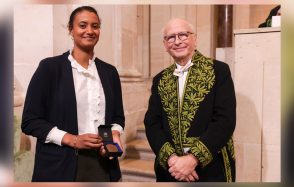
Kristel Chanard receives the 2025 Irène Joliot-Curie Prize in the “Young Female Scientist” category.
Awarded by the Ministry of Higher Education, Research, and Space, the Academy of Sciences, and the Academy of Technologies, this prize has been recogn...